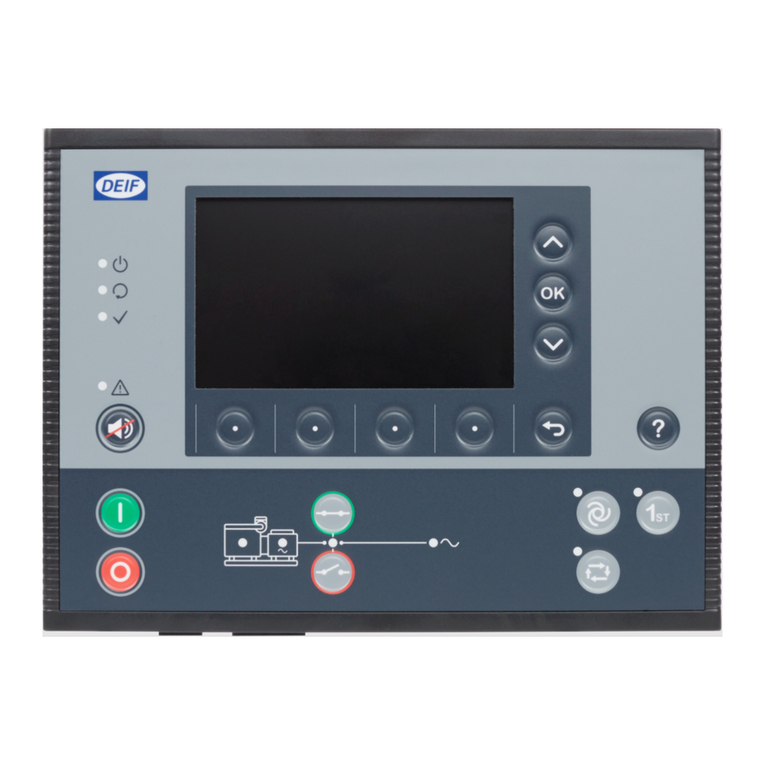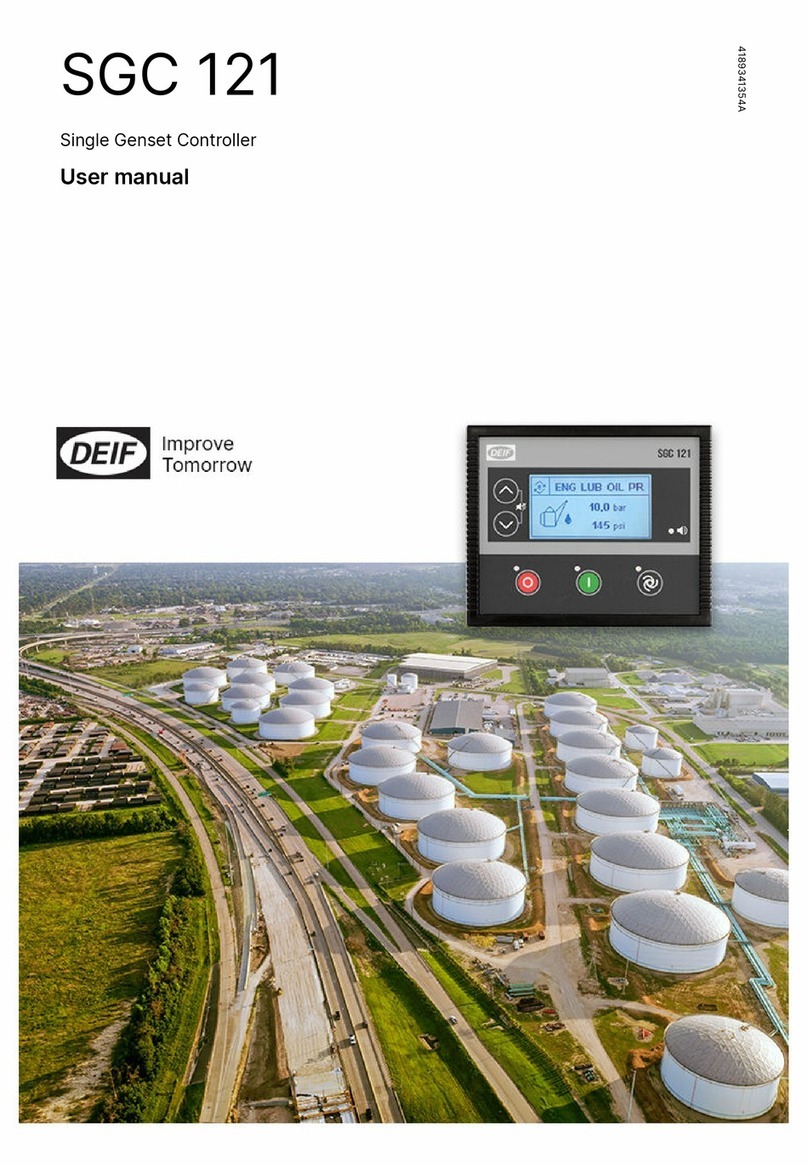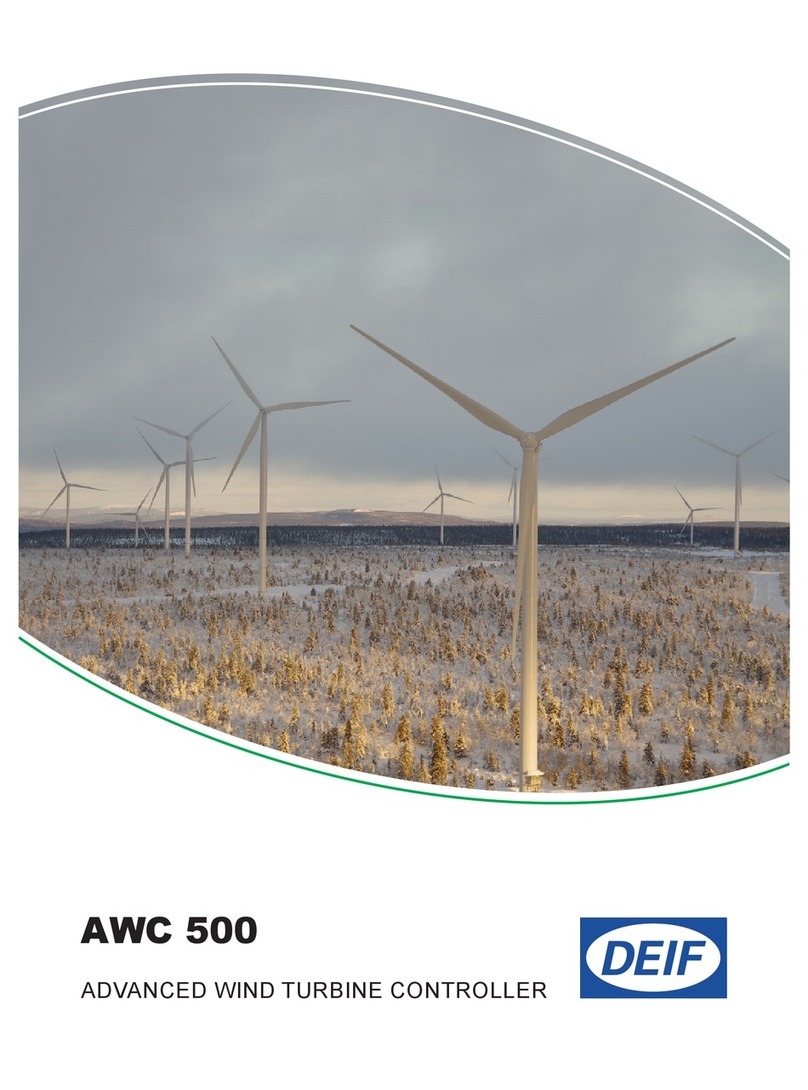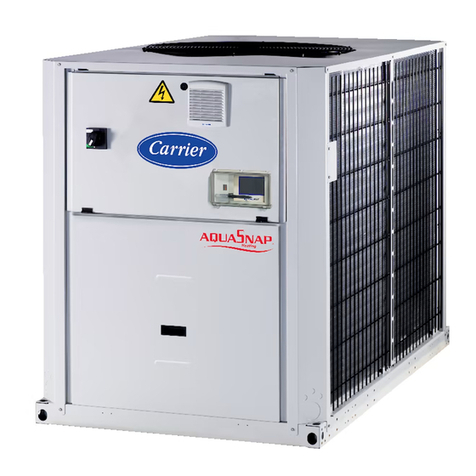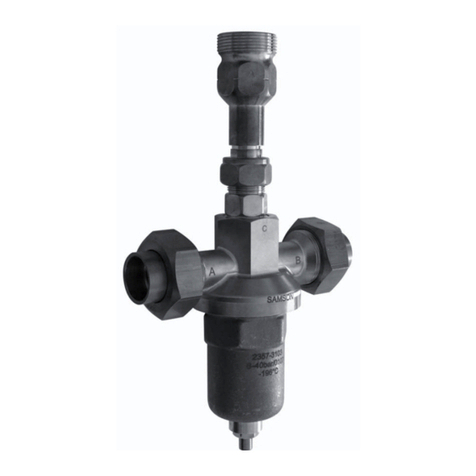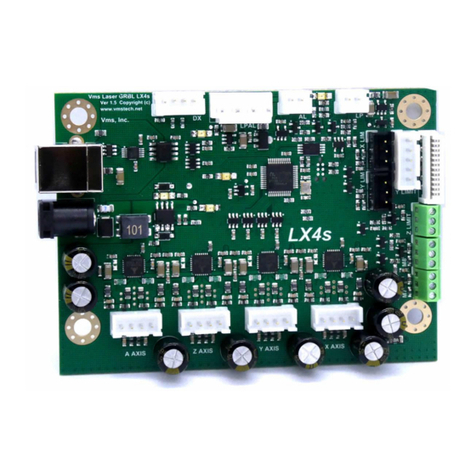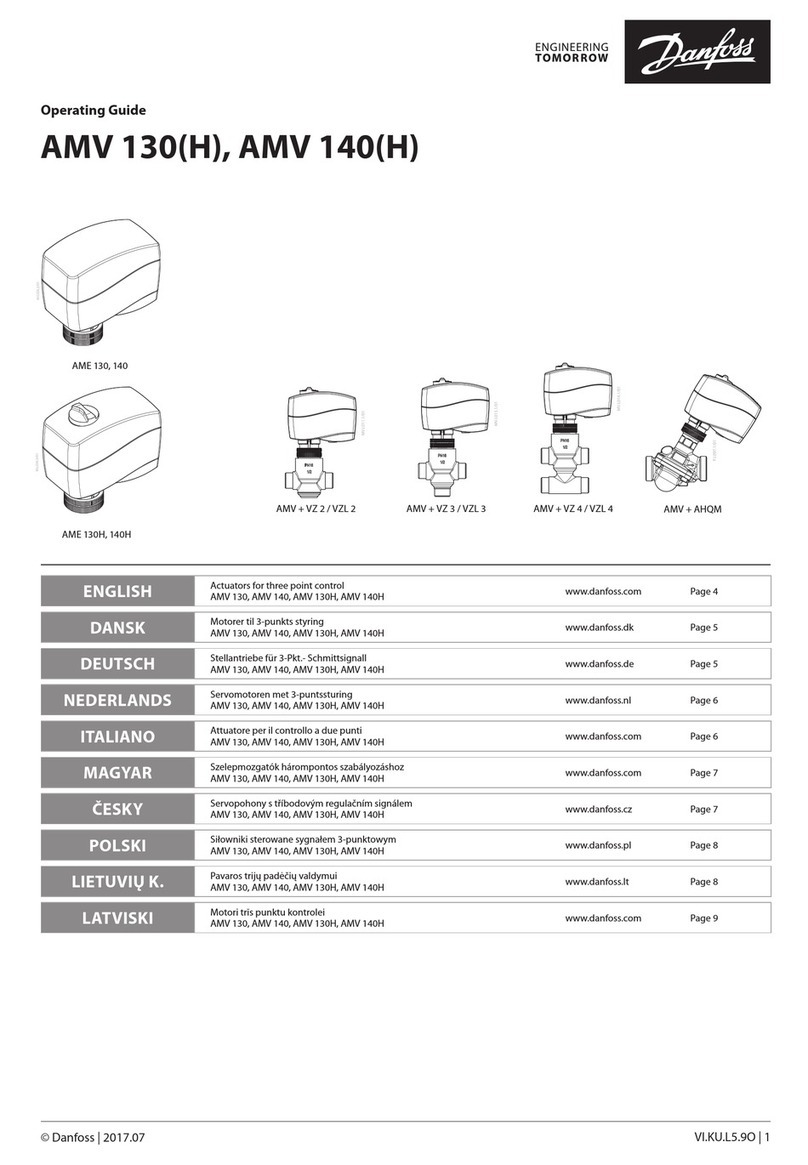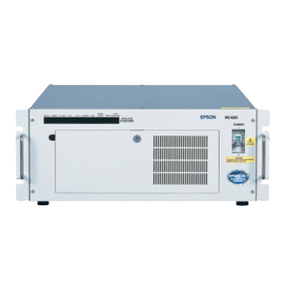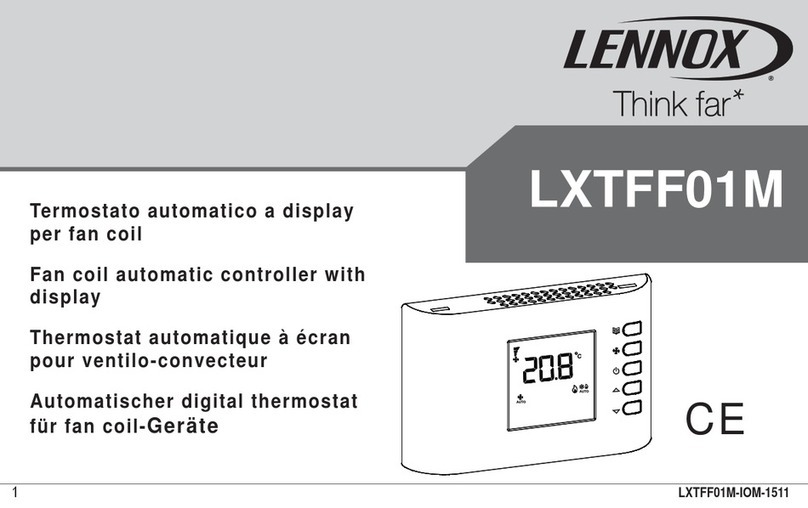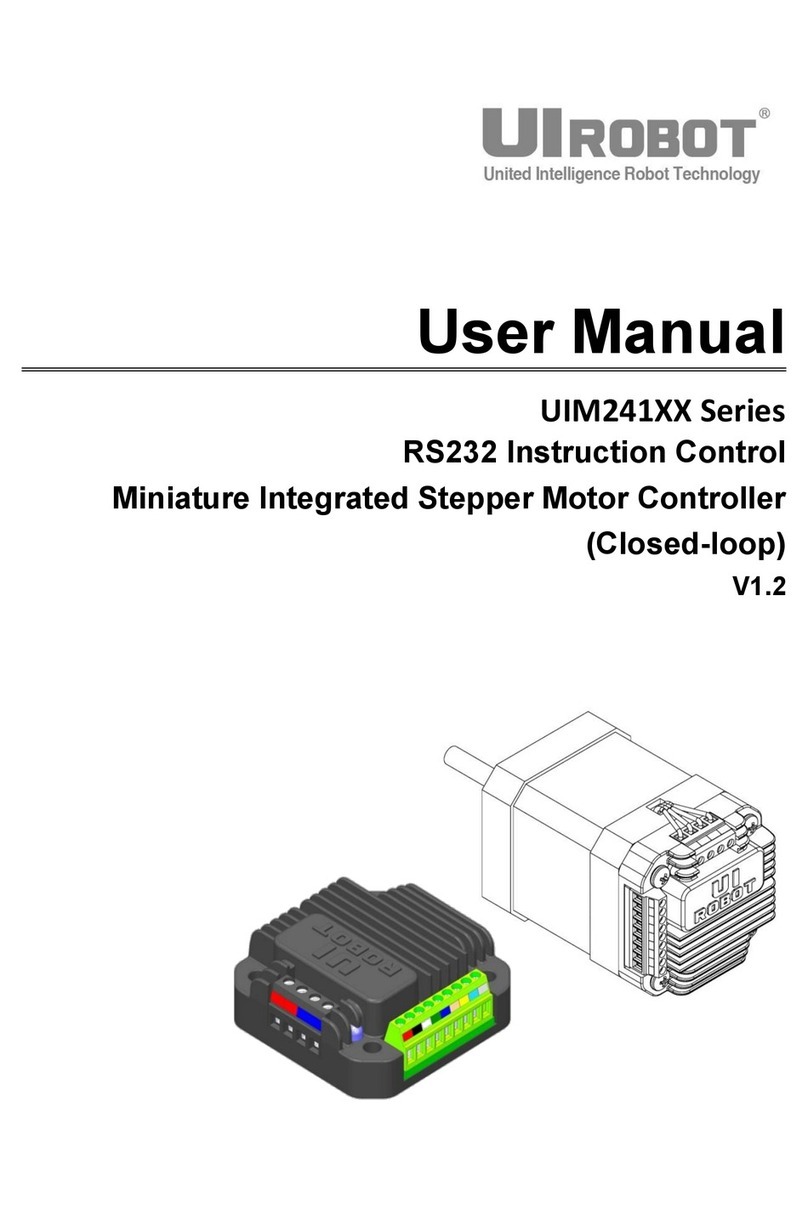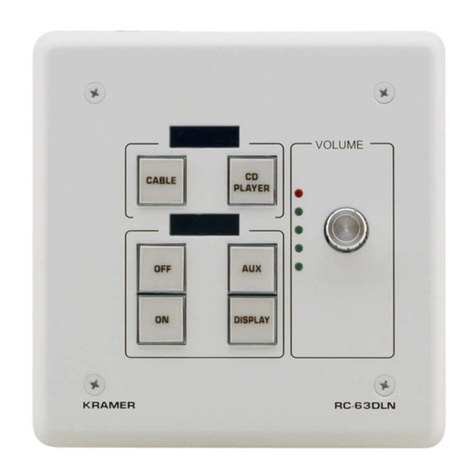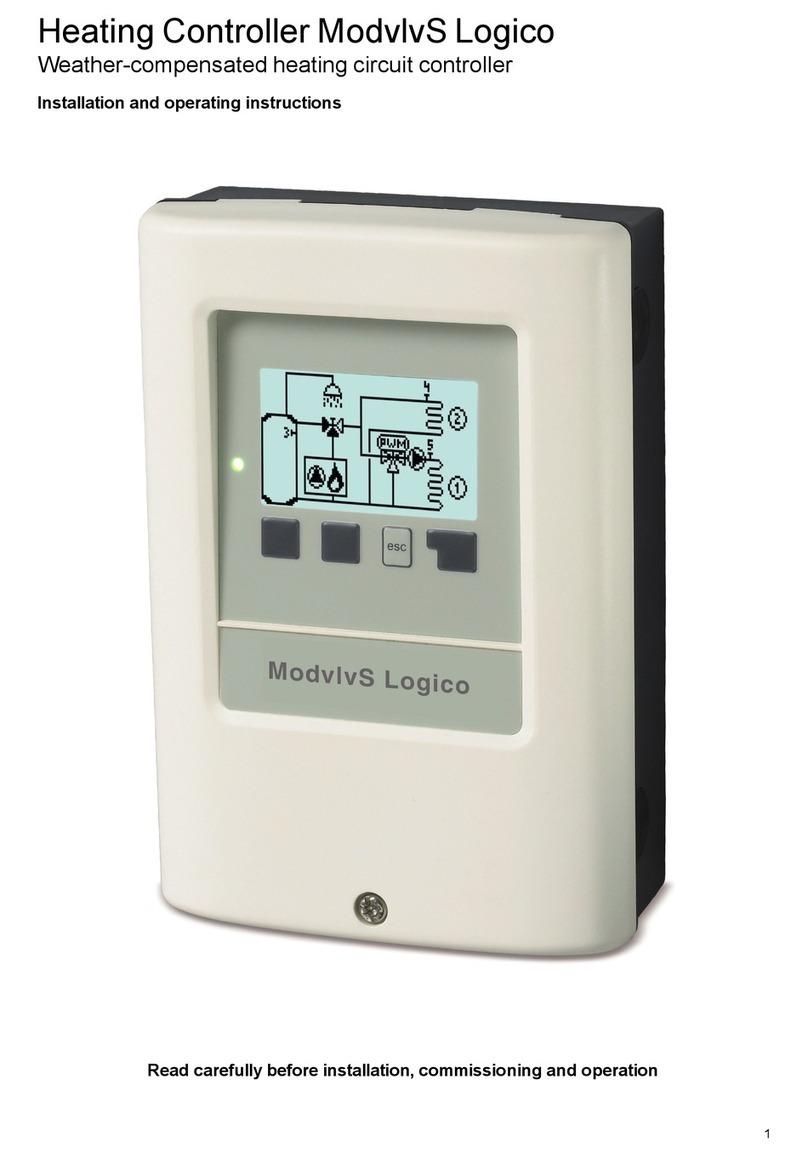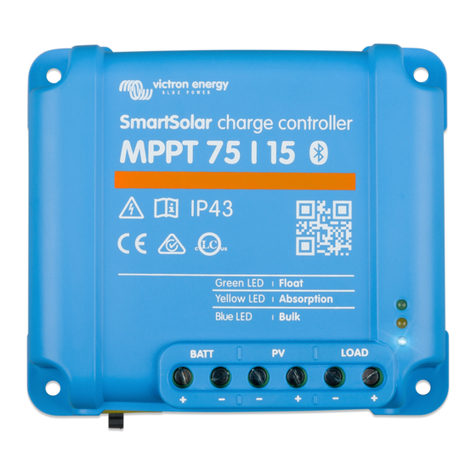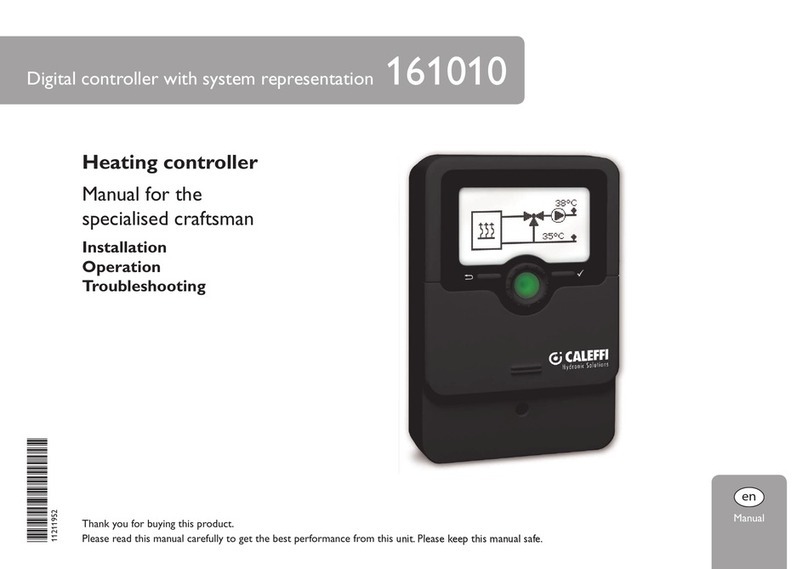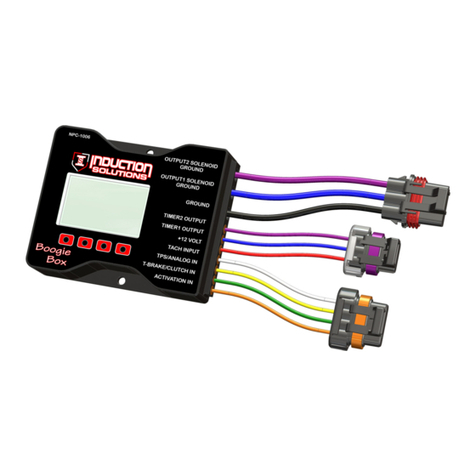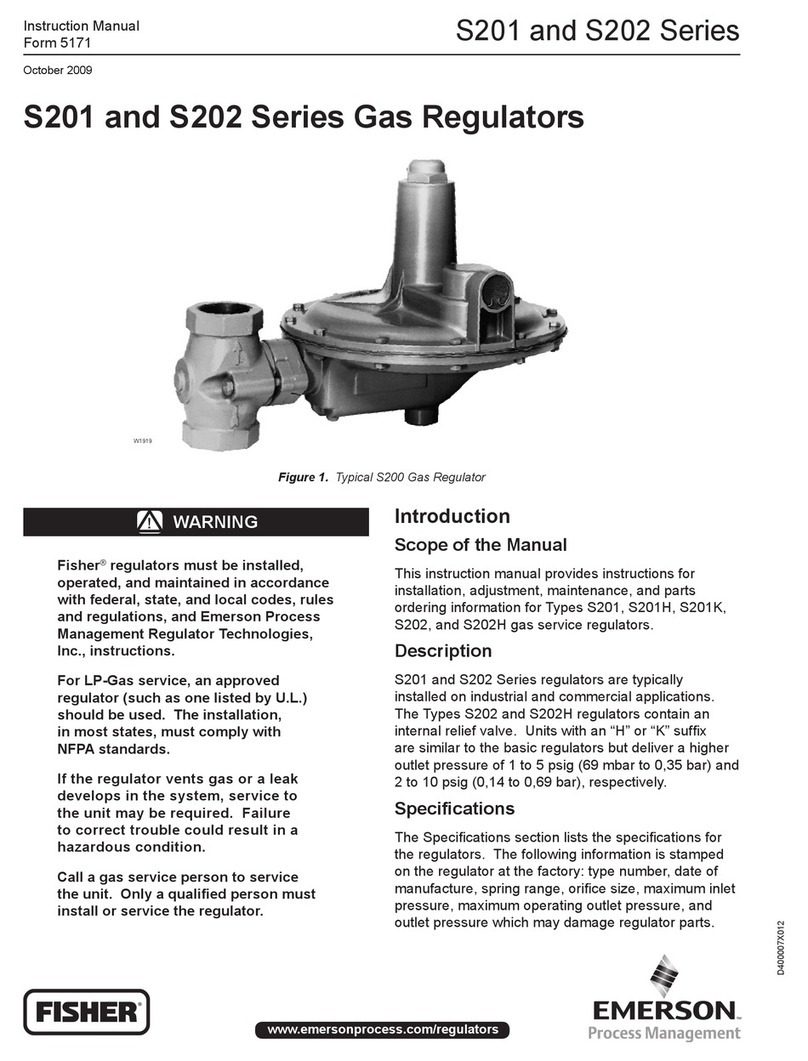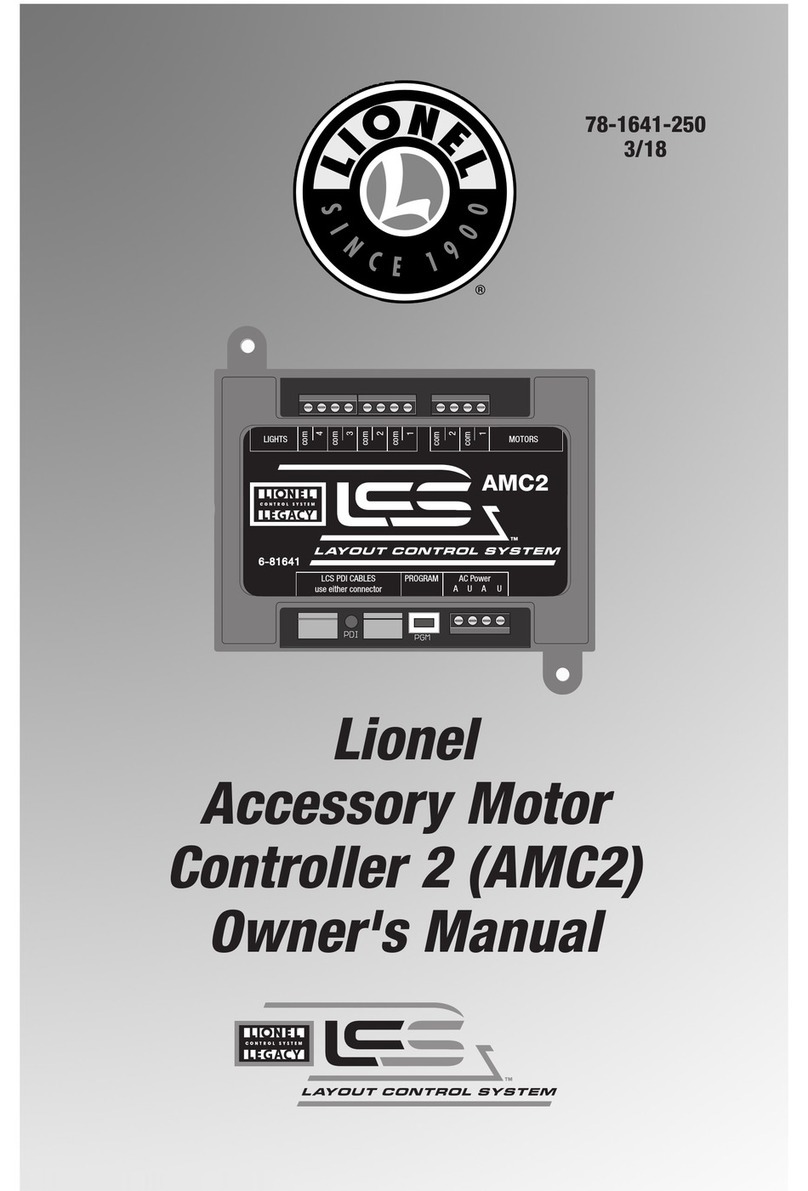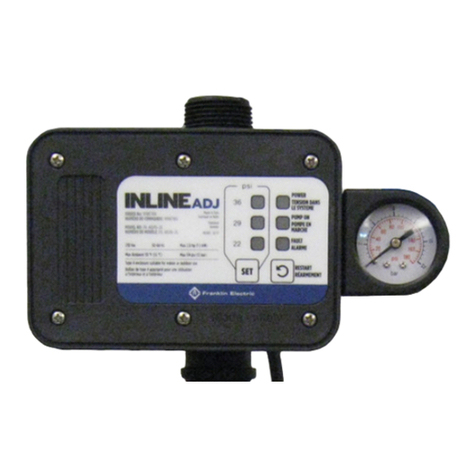Deif PPM 300 User manual

OPERATOR'S MANUAL
PPM 300
Protection and Power Management
4189340910Q

1. About the Operator's manual
1.1 Symbols for general notes....................................................................................................................................................................................................5
1.2 Symbols for hazard statements......................................................................................................................................................................................... 5
1.3 Symbols for LEDs......................................................................................................................................................................................................................5
1.4 Intended users of the Operator's manual.....................................................................................................................................................................6
1.5 Software versions......................................................................................................................................................................................................................6
1.6 Technical support .....................................................................................................................................................................................................................6
1.7 Warnings and safety.................................................................................................................................................................................................................7
1.8 Legal information.......................................................................................................................................................................................................................7
2. Getting started
2.1 About controller operation................................................................................................................................................................................................... 9
2.2 About the display unit (DU 300).......................................................................................................................................................................................10
2.2.1 Display, LEDs, and buttons......................................................................................................................................................................................... 10
2.2.2 Screen layout.....................................................................................................................................................................................................................11
2.2.3 About the virtual keyboard...........................................................................................................................................................................................12
2.2.4 About the help...................................................................................................................................................................................................................13
3. Operating the system
3.1 GENSET controller basic actions...................................................................................................................................................................................14
3.1.1 Introduction to operating the GENSET controllers............................................................................................................................................ 14
3.1.2 GENSET controller buttons.........................................................................................................................................................................................15
3.1.3 GENSET controller LEDs.............................................................................................................................................................................................16
3.1.4 Change modes................................................................................................................................................................................................................. 17
3.1.5 Start the genset................................................................................................................................................................................................................ 17
3.1.6 Stop the genset................................................................................................................................................................................................................ 18
3.1.7 Close the genset breaker............................................................................................................................................................................................. 18
3.1.8 Open the genset breaker..............................................................................................................................................................................................19
3.1.9 Set genset start and stop priority.............................................................................................................................................................................. 19
3.2 EMERGENCY genset controller basic actions........................................................................................................................................................20
3.2.1 Introduction to operating the EMERGENCY genset controller.....................................................................................................................20
3.2.2 EMERGENCY genset controller buttons...............................................................................................................................................................21
3.2.3 EMERGENCY genset controller LEDs...................................................................................................................................................................22
3.2.4 Change modes................................................................................................................................................................................................................. 23
3.2.5 Start the emergency genset........................................................................................................................................................................................23
3.2.6 Stop the emergency genset........................................................................................................................................................................................ 24
3.2.7 Close the emergency genset breaker.....................................................................................................................................................................24
3.2.8 Open the emergency genset breaker..................................................................................................................................................................... 25
3.2.9 Close the tie breaker...................................................................................................................................................................................................... 25
3.2.10 Open the tie breaker....................................................................................................................................................................................................26
3.2.11 Test the EMERGENCY genset................................................................................................................................................................................27
3.2.12 Harbour operation.........................................................................................................................................................................................................27
3.3 HYBRID controller basic actions.................................................................................................................................................................................... 28
3.3.1 Introduction to operating the HYBRID controllers..............................................................................................................................................28
3.3.2 HYBRID controller buttons.......................................................................................................................................................................................... 29
3.3.3 HYBRID controller LEDs.............................................................................................................................................................................................. 30
3.3.4 Change modes................................................................................................................................................................................................................. 31
3.3.5 Start the inverter...............................................................................................................................................................................................................31
3.3.6 Stop the inverter...............................................................................................................................................................................................................32
3.3.7 Close the inverter breaker............................................................................................................................................................................................32
OPERATOR'S MANUAL 4189340910Q EN Page 2 of 103

3.3.8 Open the inverter breaker............................................................................................................................................................................................32
3.3.9 Set inverter start and stop priority.............................................................................................................................................................................33
3.4 SHAFT generator controller basic actions................................................................................................................................................................34
3.4.1 Introduction to operating the SHAFT generator controller............................................................................................................................. 34
3.4.2 SHAFT generator controller LEDs and buttons.................................................................................................................................................. 35
3.4.3 Close the shaft generator breaker............................................................................................................................................................................36
3.4.4 Open the shaft generator breaker............................................................................................................................................................................ 36
3.5 SHORE connection controller basic actions............................................................................................................................................................37
3.5.1 Introduction to operating the SHORE connection controller......................................................................................................................... 37
3.5.2 SHORE connection controller LEDs and buttons.............................................................................................................................................. 38
3.5.3 Close the shore connection breaker........................................................................................................................................................................39
3.5.4 Open the shore connection breaker........................................................................................................................................................................ 39
3.6 BUS TIE breaker controller basic actions..................................................................................................................................................................41
3.6.1 Introduction to operating the BUS TIE breaker controller...............................................................................................................................41
3.6.2 BUS TIE breaker controller LEDs and buttons................................................................................................................................................... 42
3.6.3 Close the bus tie breaker............................................................................................................................................................................................. 43
3.6.4 Open the bus tie breaker..............................................................................................................................................................................................43
3.7 Operator messages................................................................................................................................................................................................................44
3.7.1 Controller status texts....................................................................................................................................................................................................44
3.7.2 Operator information messages................................................................................................................................................................................45
4. Home
4.1 Home page.................................................................................................................................................................................................................................. 50
5. Log on
5.1 Log on page................................................................................................................................................................................................................................51
6. Configure
6.1 Configure page......................................................................................................................................................................................................................... 52
6.2 Date and time page.................................................................................................................................................................................................................53
6.3 View design page.................................................................................................................................................................................................................... 54
6.3.1 Add or configure a view................................................................................................................................................................................................ 55
6.4 Pair page...................................................................................................................................................................................................................................... 57
6.5 Priority page...............................................................................................................................................................................................................................58
6.6 Counters page...........................................................................................................................................................................................................................59
6.7 Parameters..................................................................................................................................................................................................................................60
6.7.1 Parameters list page...................................................................................................................................................................................................... 60
6.7.2 Configure a curve............................................................................................................................................................................................................ 61
6.8 Input/output................................................................................................................................................................................................................................ 62
6.8.1 About input/output........................................................................................................................................................................................................... 62
6.8.2 Rack or ECU selection page.......................................................................................................................................................................................64
6.8.3 Module selection page.................................................................................................................................................................................................. 65
6.8.4 Terminal selection page................................................................................................................................................................................................ 66
6.8.5 Digital input (DI) page....................................................................................................................................................................................................67
6.8.6 Digital output (DO) page...............................................................................................................................................................................................68
6.8.7 Analogue input (AI) page..............................................................................................................................................................................................69
6.8.8 Analogue output (AO or PWM) page...................................................................................................................................................................... 70
7. Alarms
7.1 Alarms page............................................................................................................................................................................................................................... 71
OPERATOR'S MANUAL 4189340910Q EN Page 3 of 103

7.1.1 Alarm state......................................................................................................................................................................................................................... 72
7.1.2 Shelved alarms.................................................................................................................................................................................................................72
7.1.3 Remove from service..................................................................................................................................................................................................... 73
7.1.4 Silence horn.......................................................................................................................................................................................................................73
8. Tools
8.1 Tools page................................................................................................................................................................................................................................... 75
8.2 Tags page.....................................................................................................................................................................................................................................76
8.3 Backup page.............................................................................................................................................................................................................................. 77
8.4 Restore..........................................................................................................................................................................................................................................78
8.4.1 Restore restrictions.........................................................................................................................................................................................................78
8.4.2 Restore page.....................................................................................................................................................................................................................79
8.4.3 Restore selection page................................................................................................................................................................................................. 80
8.5 Regulator status.......................................................................................................................................................................................................................81
8.5.1 Regulator status AVR page.........................................................................................................................................................................................81
8.5.2 Regulator status GOV page........................................................................................................................................................................................82
8.6 Units page....................................................................................................................................................................................................................................83
8.7 Communication........................................................................................................................................................................................................................ 84
8.7.1 Controller communication page.................................................................................................................................................................................84
8.7.2 Display communication page......................................................................................................................................................................................85
9. Tools - Advanced
9.1 Tools advanced page............................................................................................................................................................................................................ 86
9.2 Controller type page.............................................................................................................................................................................................................. 87
9.3 Brightness page.......................................................................................................................................................................................................................88
9.3.1 Brightness level page.....................................................................................................................................................................................................89
9.3.2 Brightness time page..................................................................................................................................................................................................... 90
9.4 Permissions page....................................................................................................................................................................................................................91
9.4.1 Groups page......................................................................................................................................................................................................................92
9.4.2 Users page......................................................................................................................................................................................................................... 93
10. Log
10.1 Log page....................................................................................................................................................................................................................................94
10.2 DM2 Log page.........................................................................................................................................................................................................................95
11. Info
11.1 Info page.................................................................................................................................................................................................................................... 96
12. Live data
12.1 Live data page........................................................................................................................................................................................................................ 97
12.2 Visual synchronisation page..........................................................................................................................................................................................98
13. Troubleshooting
13.1 Troubleshooting the system in Switchboard control....................................................................................................................................... 99
13.2 Troubleshooting alarms.................................................................................................................................................................................................... 99
13.3 Troubleshooting analogue input sensor failures............................................................................................................................................. 100
13.4 Troubleshooting communication.............................................................................................................................................................................. 100
14. Replace internal battery
14.1 Replace battery in PCM3.1............................................................................................................................................................................................ 101
15. End-of-life
15.1 Disposal of waste electrical and electronic equipment................................................................................................................................ 103
OPERATOR'S MANUAL 4189340910Q EN Page 4 of 103

1. About the Operator's manual
1.1 Symbols for general notes
NOTE This shows general information.
More information
This shows where you can find more information.
Example
This shows an example.
How to ...
This shows a link to a video for help and guidance.
1.2 Symbols for hazard statements
DANGER!
This shows dangerous situations.
If the guidelines are not followed, these situations will result in death, serious personal injury, and equipment damage or
destruction.
WARNING
This shows potentially dangerous situations.
If the guidelines are not followed, these situations could result in death, serious personal injury, and equipment damage
or destruction.
CAUTION
This shows low level risk situation.
If the guidelines are not followed, these situations could result in minor or moderate injury.
NOTICE
This shows an important notice
Make sure to read this information.
1.3 Symbols for LEDs
LEDs in this document are noted by the following symbols:
OPERATOR'S MANUAL 4189340910Q EN Page 5 of 103

Symbol Colour State Notes
Grey Off Static • The LED is not active.
• The feature or indication is not active.
Any On Static The feature or indication is active.
Any On Flashing The feature or indication is active.
NOTE Some products do not support all LED colours.
1.4 Intended users of the Operator's manual
CAUTION
Read this manual
Read this manual before you operate the system. Failure to do this may result in personal injury and damage to the
equipment.
The Operator's manual is for the operator that completes daily operations with the controller. The manual includes information about
the LEDs, buttons and screens, and general operator tasks, alarms, and logs.
1.5 Software versions
The information in this document relates to software versions:
Software Details Version
PCM APPL Controller application 1.0.16.x
DU APPL Display unit application 1.0.17.x
PICUS PC software 1.0.16.x
1.6 Technical support
Technical documentation
Download the technical documentation from the DEIF website: https://www.deif.com/documentation/
Service and support
DEIF is committed to being available to our customers and partners 24 hours a day, seven days a week, to guarantee the highest
levels of service and support.
https://www.deif.com/support
Training
DEIF arranges training courses at DEIF offices worldwide.
https://www.deif.com/training
Additional service
DEIF offers service with design, commissioning, operating and optimisation.
https://www.deif.com/support/local-office
OPERATOR'S MANUAL 4189340910Q EN Page 6 of 103

1.7 Warnings and safety
Safety during installation and operation
When you install and operate the equipment, you may have to work with dangerous currents and voltages. The installation must
only be carried out by authorised personnel who understand the risks involved in working with electrical equipment.
DANGER!
Hazardous live currents and voltages
Do not touch any terminals, especially the AC measurement inputs and the relay terminals, as this could lead to injury or
death.
Automatic and remote-controlled starts
CAUTION
Automatic genset start
The power management system automatically starts gensets when more power is needed. It can be difficult for an
inexperienced operator to predict which gensets will start. In addition, gensets can be started remotely (for example, via
an Ethernet connection, or a digital input).
To avoid personal injury, the genset design, the layout, and maintenance procedures must take this into account.
Switchboard control
In Switchboard control, the operator operates the equipment from the switchboard. When Switchboard control is activate:
• The controller trips the breaker and/or shuts down the engine, if an alarm situation arises that requires a trip and/or shutdown.
• The controller does not respond to a blackout.
• The controller does not provide power management.
• The controller does not accept operator commands.
• The controller cannot and does not prevent manual operator actions.
The switchboard design must protect the system when the controller is in Switchboard control.
DANGER!
Manual override of alarm action
Do not use switchboard or manual control to override the alarm action of an active alarm.
An alarm may be active because it is latched, or because the alarm condition is still active. If the alarm action is
manually overridden, the latched alarm provides no protection.
1.8 Legal information
Disclaimer
DEIF A/S reserves the right to change any of the contents of this document without prior notice.
The English version of this document always contains the most recent and up-to-date information about the product. DEIF does not
take responsibility for the accuracy of translations, and translations might not be updated at the same time as the English document.
If there is a discrepancy, the English version prevails.
OPERATOR'S MANUAL 4189340910Q EN Page 7 of 103

Warranty
The rack may only be opened to remove, replace, and/or add a hardware module or the internal battery on PCM3.1. The procedure
in the Installation instructions must be followed. If the rack is opened for any other reason, and/or the procedure is not followed,
then the warranty is void.
If the display unit is opened, then the warranty is void.
Open source software
This product contains open source software licensed under, for example, the GNU General Public License (GNU GPL) and GNU
Lesser General Public License (GNU LGPL). The source code for this software can be obtained by contacting DEIF at
[email protected]. DEIF reserves the right to charge for the cost of the service.
Trademarks
DEIF, power in control and the DEIF logo are trademarks of DEIF A/S.
Bonjour® is a registered trademark of Apple Inc. in the United States and other countries.
Adobe®, Acrobat®, and Reader®are either registered trademarks or trademarks of Adobe Systems Incorporated in the United
States and/or other countries.
CANopen® is a registered community trademark of CAN in Automation e.V. (CiA).
SAE J1939® is a registered trademark of SAE International®.
CODESYS® is a trademark of CODESYS GmbH.
EtherCAT®, EtherCAT P®, Safety over EtherCAT®, are trademarks or registered trademarks, licensed by Beckhoff Automation
GmbH, Germany.
Modbus® is a registered trademark of Schneider Automation Inc.
Windows® is a registered trademark of Microsoft Corporation in the United States and other countries.
All trademarks are the properties of their respective owners.
Copyright
© Copyright DEIF A/S. All rights reserved.
OPERATOR'S MANUAL 4189340910Q EN Page 8 of 103

2. Getting started
2.1 About controller operation
The PPM 300 controllers make sure that required power is available and the system is protected for typical marine applications.
Power Management System (PMS) control
All controllers usually operate with PMS control.
The GENSET or HYBRID controllers usually operate in AUTO mode. In AUTO mode, the PMS automatically starts and stops
gensets or inverters, for the power requirements. The PMS automatically controls the genset or inverter breakers. Gensets or
inverters connect automatically as necessary.
The SHAFT generator, SHORE connection and BUS TIE breaker controllers usually operate in PMS control. These do not
automatically connect to a shaft generator or a shore connection, or automatically close to a bus tie breaker. You must manually
start these actions. Once you start these actions, the controller automatically follows a pre-programmed sequence.
The GENSET, HYBRID, and EMERGENCY genset controllers can operate in either AUTO or a semi-automatic (SEMI) mode. These
are PMS modes. In SEMI mode, you must manually start or stop the genset or inverter. You must also manually start the pre-
programmed sequence to close or open the genset or inverter breaker to the busbar.
Switchboard control
Each controller can operate in switchboard control. You can manually operate the genset speed and open and close the breakers.
Use Switchboard control for troubleshooting, or to manually override the system..
In Switchboard control, all the controller functions are not available, but the controller protections stay active. The controller monitors
the operation for alarm conditions, and activates alarm actions if necessary.
Buttons and LEDs
You can use the push-buttons to operate the system. You can change modes, start pre-programmed sequences, change genset
priority, and silence alarms. The buttons to start or stop the genset, or close or open the breakers, are only active in SEMI mode.
The display LEDs show the status of the system.
Display screen
Use the display screen to:
• Monitor system operation.
• Log on to the controller.
• See alarm lists and logs.
• Acknowledge and unlatch alarms.
• Configure the controller settings.
NOTE Features are protected by user level permissions.
PICUS
Power In Control Utility Software (PICUS) is the computer software to configure and monitor the controllers. You can connect a
computer with PICUS to the controller (direct connection). You can now configure, supervise, send commands and more.
OPERATOR'S MANUAL 4189340910Q EN Page 9 of 103

2.2 About the display unit (DU 300)
2.2.1 Display, LEDs, and buttons
Switchboard control
Home
P1
12:00
Configure Tools Info
Live dataLogAlarmLog on
1
6
9
11
2
3
4
5
7 8
10
No. Item Notes
1 Display unit power Off : Unit not powered. Green : Unit powered.
2 Self-check OK Off : Controller self-check not OK, or no
connection to the controller.
Green : Controller self-check OK.
3 Ready for operation Off : Controller in switchboard control or an
alarm action prevents source from supplying
power.
Green : Controller not in switchboard control
and no alarm action prevents the source from
supplying power.
4 Alarm Green : No alarms.
Yellow : Unlatched alarms can be reset.
Red : All active alarms acknowledged.
Green flash : Only cleared unacknowledged
alarms.
Yellow flash : Unacknowledged latched
alarms
Red flash : Unacknowledged alarms.
5 Horn silence Stop the horn output. Hold: Change to alarms page.
6 Screen Shows the feature or page.
7 Bottom strip LEDs and buttons for the controller type.
8 Soft key Move selection to a column, or select the soft key shown on screen.
9 Back Change to previous page. Hold: Change to home page.
10 Selection on screen Up : Move selection up on the screen.
OK : confirm selection on screen.
Down : Move selection down on the screen.
11 Help Change to help page. Hold: Change to Live data page.
OPERATOR'S MANUAL 4189340910Q EN Page 10 of 103

2.2.2 Screen layout
Ready for operation
Home
P1
12:00
Configure Tools Info
Live dataLogAlarmLog on
5
3
4
1 2
6
No. Item Notes
1 Status text Shows the status of the controller.
2 Symbols Shows information as symbols:
Active alarms in system.
Logged on user.
P# shows genset priority (only GENSET controllers).
3 Path Shows the path for the selected page.
4 Page Shows the menu or page.
5 Soft keys Shows the soft keys for the page viewed.
6 Time Shows the time from the controller.
OPERATOR'S MANUAL 4189340910Q EN Page 11 of 103

2.2.3 About the virtual keyboard
The display unit features several virtual keyboards to enter information or settings.
Switchboard control
Home / Configure / IO configuration / Terminals / Status
P1
12:00
Digital output 1
q
a
z
w
s
x
e r
d
c
f
v
t
g
b
y
h
nm
u
j
i
k
o p
l-
Aa#1
Write
3
1
2
4 5
6
No. Item Notes
1 Text input Shows the text, numbers, or value entered.
2 Virtual keyboard Shows keyboard layout selected.
3 Cursor selection Move left cursor selection.
Move right cursor selection.
Or use Up or Down .
4 Delete Delete character at selection.
5 Soft key confirm Soft key function varies by page selected.
6 Change keyboard Changes layout to a different virtual keyboard.
OPERATOR'S MANUAL 4189340910Q EN Page 12 of 103

2.2.4 About the help
View help for any page by selecting Help button
Switchboard control
Home / Help
P1
12:00
Home menu
The Home menu provides access to all of the different features or menus of the controller.
INFO
Features of the controller are protected by group and user permissions. Some
features may be read only or not visible, depending upon the user profile logged on
to the controller. Please refer to the design of your system permissions.
From this screen you can:
View the
View the
options.Log on
Configure menu.
1
2
No. Item Notes
1 Help information
Shows help information for the page you were viewing.
The default help is shown if not help is available for the page.
2 Scroll Scroll up the page. Scroll down the page.
Select Back to close the help page and return to the previous page.
OPERATOR'S MANUAL 4189340910Q EN Page 13 of 103

3. Operating the system
3.1 GENSET controller basic actions
3.1.1 Introduction to operating the GENSET controllers
Normal operation
The GENSET controllers are usually in AUTO mode. In AUTO mode, the Power Management System (PMS) automatically starts/
stops and connects/disconnects the gensets. The PMS operates with the settings for power requirements and the genset priority.
Blackout response
When a blackout occurs:
•AUTO mode
◦ The PMS automatically follows the blackout-recovery sequence to start the gensets and restore power.
•SEMI mode
◦ The PMS automatically changes the controller to AUTO mode. No operator actions are necessary.
•Switchboard control
◦ The PMS does not try to start or connect the genset. If you want the PMS to start and connect the genset, you must change
to PMS control on the switchboard.
OPERATOR'S MANUAL 4189340910Q EN Page 14 of 103

3.1.2 GENSET controller buttons
2
1 3
No. Item Notes
1 Genset Start genset and start sequence. * Stop genset and stop sequence. *
2 Breaker Close breaker : Starts close
sequence. * Open breaker : Starts open sequence. *
3 Options AUTO mode : Change to AUTO if
possible. *
Off : Controller not in AUTO.
Green : Controller in AUTO.
SEMI mode : Change to SEMI if
possible.
Off : Controller not in SEMI.
Green : Controller in SEMI.
1st: Controller gives this genset first
priority in the genset start order in the
PMS.
Off : Other genset has first priority, or PMS automatically
calculates genset priority, or controller in switchboard control.
Green : Genset has first priority in the genset start order in the
PMS.
Yellow : Genset is next in the genset start order in the PMS.
NOTE * Only in SEMI mode. In AUTO or Switchboard control the controller ignores the input.
OPERATOR'S MANUAL 4189340910Q EN Page 15 of 103

3.1.3 GENSET controller LEDs
321 4
No. Item Notes
1 Engine Off : Engine not running or no running feedback.
Green flash : Engine start sequence initiated.
Green : Running feedback. Oil pressure, RPM, frequency within configured limits.
2 Generator Off : Generator voltage too low to measure.
Yellow : Generator voltage and frequency not OK. Cannot close breaker.
Green flash : Generator voltage and frequency OK, V&Hz OK timer still running. Cannot close breaker.
Green : Generator voltage and frequency OK, and controller can synchronise and close breaker.
3 Breaker Off : Breaker open
Green : Breaker closed.
Yellow : Breaker spring charging (only compact breaker).
Yellow flash : Synchronising or de-loading breaker.
Red flash : Any generator breaker trip alarm active.
Red : Tripped breaker, and trip alarm unacknowledged and/or alarm condition present.
4 Busbar Green : Voltage and frequency OK, and controller can synchronise and close breaker.
Green flash : Voltage and frequency OK, but V&Hz OK timer running. Controller cannot close breaker.
Yellow : Voltage and frequency are measurable, but not OK.
Red : Voltage too low to measure. Controller can close breaker.
Red flash: Blackout detection timer running and controller checking the busbar.
OPERATOR'S MANUAL 4189340910Q EN Page 16 of 103

3.1.4 Change modes
The GENSET controller can operate in PMS control, in AUTO or SEMI mode. The controller can also operate in Switchboard
control. The following procedures describe how to change the controller's operating mode and control.
Mode Procedure
AUTO *
To change to AUTO mode from SEMI mode:
1. Push to select AUTO mode.
• The LED next to is green when the controller is in AUTO mode.
SEMI *
To change to SEMI mode from AUTO mode:
1. Push to select SEMI mode.
• The LED next to is green when the controller is in SEMI mode.
Switchboard
control
To change to Switchboard control from AUTO or SEMI mode:
1. Move the selector on the switchboard to Switchboard control.
• For safety reasons, when there is a connected GENSET controller in Switchboard control, all the
GENSET controllers in AUTO mode are automatically changed to SEMI mode.
• The automatic power management functions (automatic genset start/stop, and automatic breaker
close/open) are no longer active for any GENSET controllers.
• Each controller still trips the breakers and/or stop the genset if an alarm that trips the breakers and/or
stops the genset is activated.
NOTE * You cannot change from Switchboard control with the display push-buttons. The Switchboard control selector must be set
to PMS, before you can change to AUTO or SEMI mode.
NOTICE
Last GENSET changes to SEMI mode
If you change the last GENSET controller that is in AUTO mode to SEMI mode, the PMS cannot automatically start or stop
gensets, or open or close breakers.
The switchboard equipment is third-party equipment. The Switchboard control selector labels could be different from the names
used above.
3.1.5 Start the genset
Mode Procedure
AUTO
When the controller is in AUTO mode, the start of a genset is controlled automatically and the display push-
buttons are not available. If the PMS calculates that more power is required, the controller automatically starts
the gensets, with the genset priority order.
SEMI
To start the genset:
1. Push once.
2. The controller runs the start sequence.
• If everything is OK, the genset starts.
• If the genset does not start, the display shows an information message.
3. If Idle run start is configured: *
• The controller runs the Idle run start sequence.
OPERATOR'S MANUAL 4189340910Q EN Page 17 of 103

Mode Procedure
◦ If needed, to override the Idle run start, push again.
Switchboard
control
When the controller is in Switchboard control, the display push-buttons are not available. The genset can only
be started locally and/or from the switchboard.
NOTE * Idle run may not be permitted or approved by certain maritime classification societies.
The switchboard equipment is third-party equipment. The switchboard might not include a button to start the genset.
3.1.6 Stop the genset
Mode Procedure
AUTO
When the controller is in AUTO mode, the genset stop is controlled automatically and the display push-buttons
are not available. If the PMS calculates that power is not necessary, the controller automatically stops the
gensets, with the genset priority order.
SEMI
The genset breaker must be open to stop the genset. If the genset breaker is not open, push to open the
breaker before stopping the genset.
More information
See Open the genset breaker for more information.
To stop the genset:
1. Push once.
2. The controller activates the cooldown period.
• If necessary, to override the cooldown period, push again.
◦Note: A genset stop without cooldown time increases the mechanical wear of the genset. The genset
may also have problems if it needs to restart immediately. The genset should only be stopped without
cooldown time in emergencies. Contact the genset manufacturer for more information.
3. If Idle run stop is configured: *
• The controller runs the Idle run stop sequence.
◦ If needed, to override the Idle run stop, push again.
4. If the genset does not stop, the controller activates an alarm.
Switchboard
control
When the controller is in switchboard control, the display push-buttons are not available. The genset can only be
stopped locally and/or from the switchboard.
NOTE * Idle run may not be permitted or approved by certain maritime classification societies.
The switchboard equipment is third-party equipment. The switchboard might not include a button to stop the genset.
3.1.7 Close the genset breaker
Mode Procedure
AUTO
When the controller is in AUTO mode, the genset breaker is controlled automatically and the display push-
buttons are not available. If more power is required, the controller automatically starts the gensets and closes
the breakers, with the genset priority order.
SEMI
The genset must be running to close the genset breaker. If the genset is not running, push to start the
genset.
More information
See Start the genset for more information.
To close the breaker:
OPERATOR'S MANUAL 4189340910Q EN Page 18 of 103

Mode Procedure
1. Push to close the genset breaker.
a. The PMS synchronises the genset with the busbar (the breaker LED flashes yellow ).
b. When the genset and busbar synchronise, the controller closes the breaker.
c. When the breaker is closed, the breaker LED is green .
• If the genset and busbar are not synchronised before the synchronisation timer expires, the breaker
does not close. The synchronisation failure alarm is activated.
Switchboard
control
When the controller is in Switchboard control, the display push-buttons are not available. The genset breaker
can only be closed from the switchboard.
3.1.8 Open the genset breaker
Mode Procedure
AUTO
When the controller is in AUTO mode, the genset breaker is controlled automatically and the display push-
buttons are not available. If power is not required, the controller automatically opens the genset breaker as
part of the genset stop sequence.
SEMI
To open the genset breaker:
1. Push to open the genset breaker.
a. The PMS calculates if the available power is sufficient after the genset breaker opens. If not, the PMS
prevents the genset breaker to open, and the controller display unit shows an info message.
b. The PMS de-loads the breaker until the load is less than the de-load open point (the breaker LED
flashes yellow ).
c. The controller opens the genset breaker.
d. The LED is OFF when the breaker is open.
Switchboard
control
When the controller is in Switchboard control, the display push-buttons are not available. The breaker can only
be opened from the switchboard.
3.1.9 Set genset start and stop priority
The PMS can operate gensets with a priority order. You can run automatically some gensets more than other gensets if necessary. If
a genset start is necessary, the PMS starts the first non-running genset in the priority order.
You can determine the genset priority manually, or let the PMS operate the priority.
Push on a GENSET controller display to manually move the genset to the first position in the priority order. The LED next to
lights when a GENSET controller has first priority.
More information
See Priority page for more information about how to change the priority for multiple controllers.
OPERATOR'S MANUAL 4189340910Q EN Page 19 of 103

3.2 EMERGENCY genset controller basic actions
3.2.1 Introduction to operating the EMERGENCY genset controller
Normal operation
The EMERGENCY genset controller is usually in AUTO mode. During normal operation the emergency genset does not run.
Blackout response
When a blackout occurs:
•AUTO mode
◦ The PMS automatically follows the blackout-recovery sequence to start the gensets and restore power.
◦ If the gensets do not supply power within the time allowed, the PMS automatically opens the tie breaker, starts the
emergency genset and closes the emergency genset breaker.
•SEMI mode
◦ The controller automatically changes to AUTO mode. No operator actions are needed.
•Switchboard control
◦ The PMS does not attempt to start or connect the emergency genset. If you want the PMS to start and connect the
emergency genset, you must change to PMS control on the switchboard.
Harbour operation
When harbour operation is active, the emergency genset breaker and the tie breaker are closed. The emergency genset runs, and
supplies power as if it were an ordinary genset. The PMS controls the system, and starts and stops the other gensets as needed. In
AUTO mode and harbour operation, the emergency genset is first in the genset priority order.
OPERATOR'S MANUAL 4189340910Q EN Page 20 of 103
Other manuals for PPM 300
2
Table of contents
Other Deif Controllers manuals
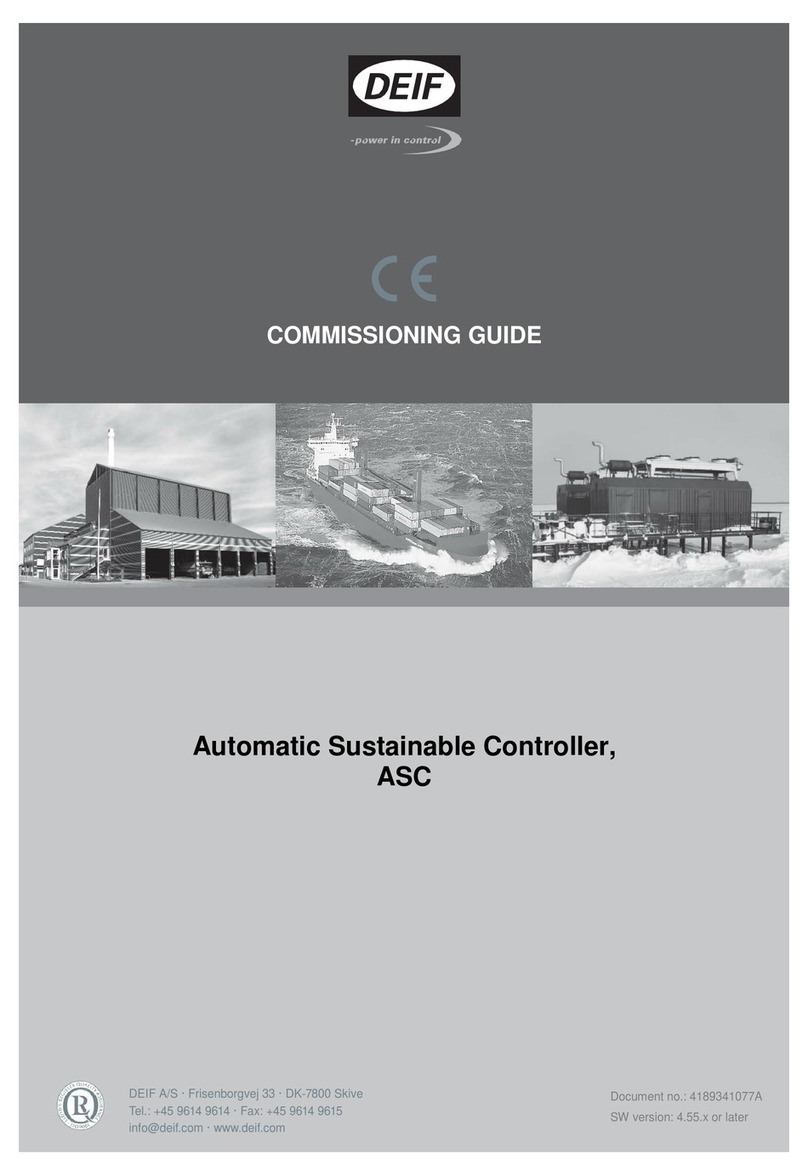
Deif
Deif ASC Series User manual

Deif
Deif AGC 200 Series User manual

Deif
Deif AGC-3 User manual
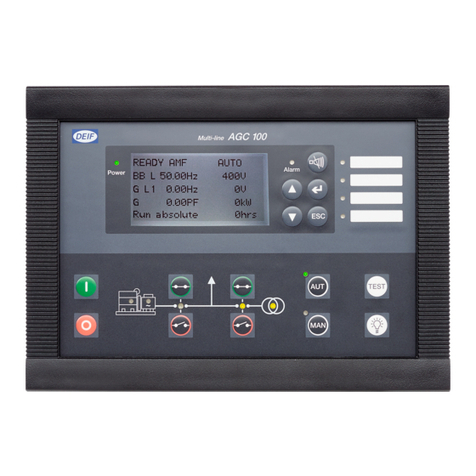
Deif
Deif AGC 100 User manual
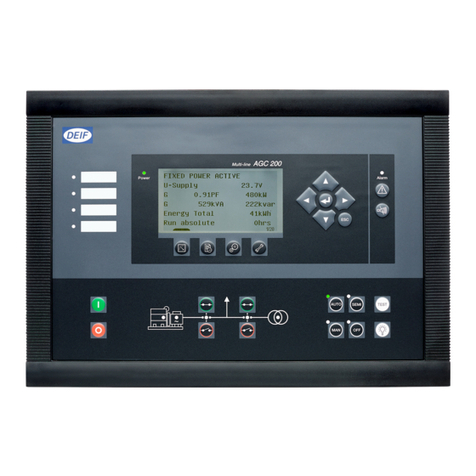
Deif
Deif AGC 200 Series Instruction Manual

Deif
Deif AGC-4 User manual
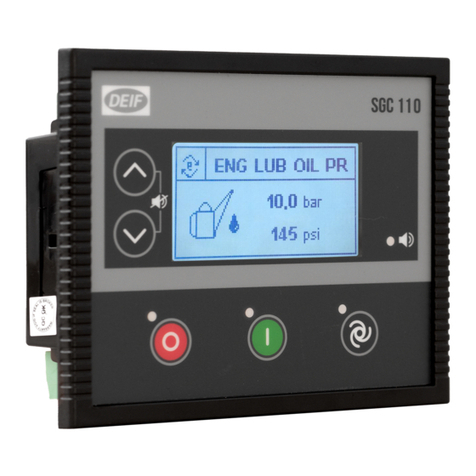
Deif
Deif SGC 110 User manual
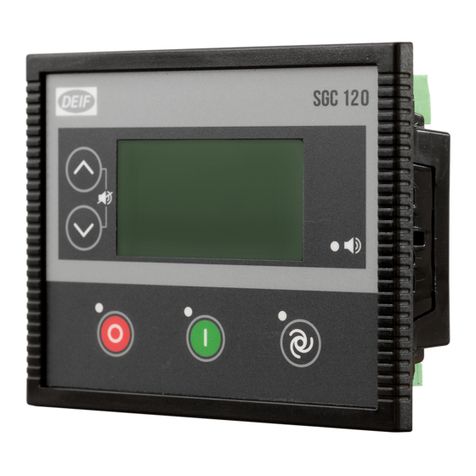
Deif
Deif SGC 120 User manual
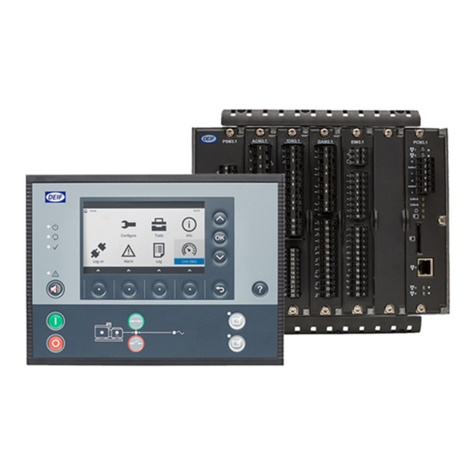
Deif
Deif GPC 300 User manual

Deif
Deif SGC 120 User manual

Deif
Deif AGC 150 User manual
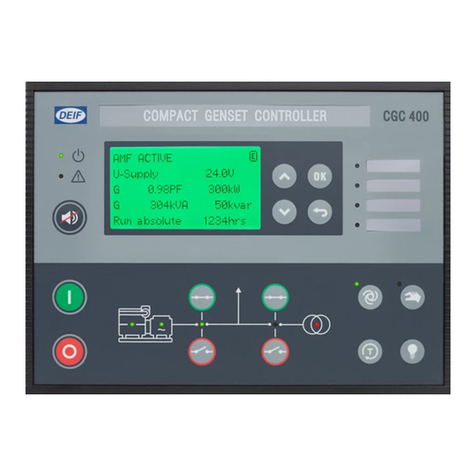
Deif
Deif CGC 400 User manual
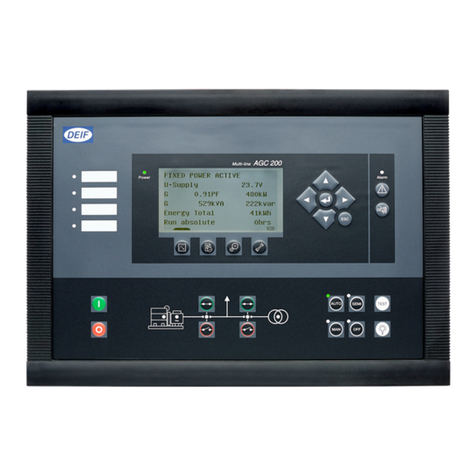
Deif
Deif AGC 200 Series User manual
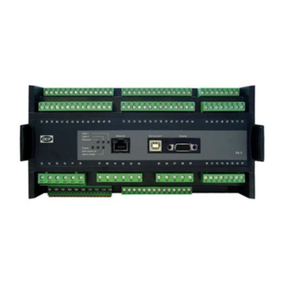
Deif
Deif AGC-4 Mk II User manual

Deif
Deif AGC 100 User manual
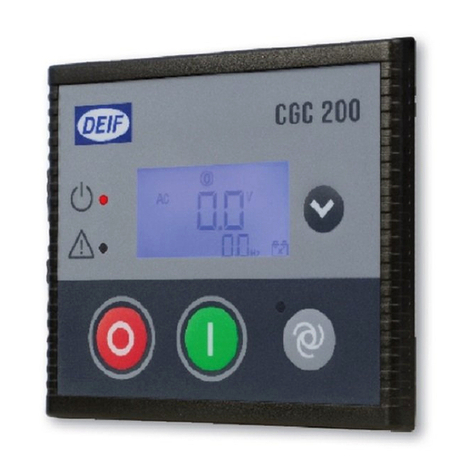
Deif
Deif CGC 200 Installation and operation manual
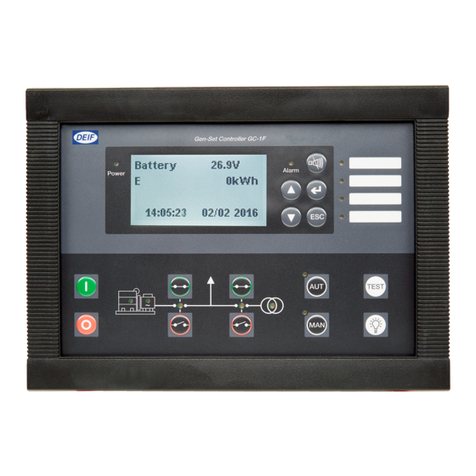
Deif
Deif GC-1F User manual

Deif
Deif AGC 200 User manual
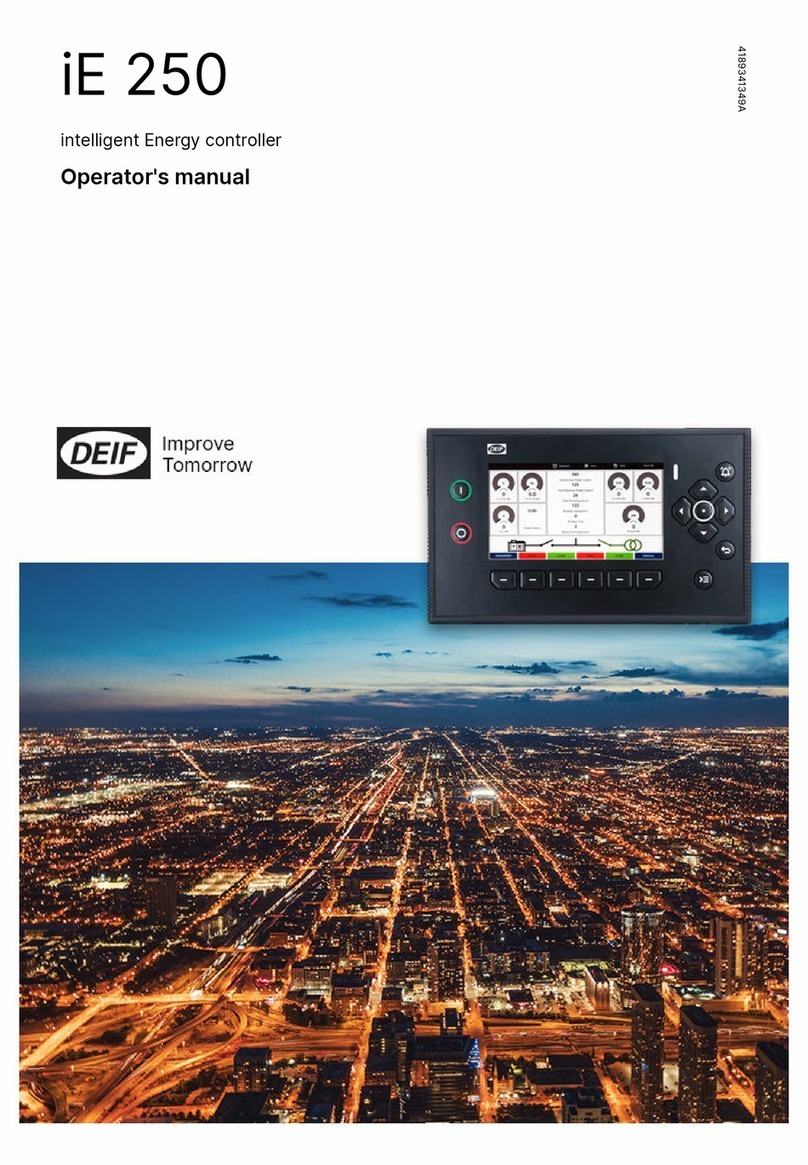
Deif
Deif iE 250 User manual
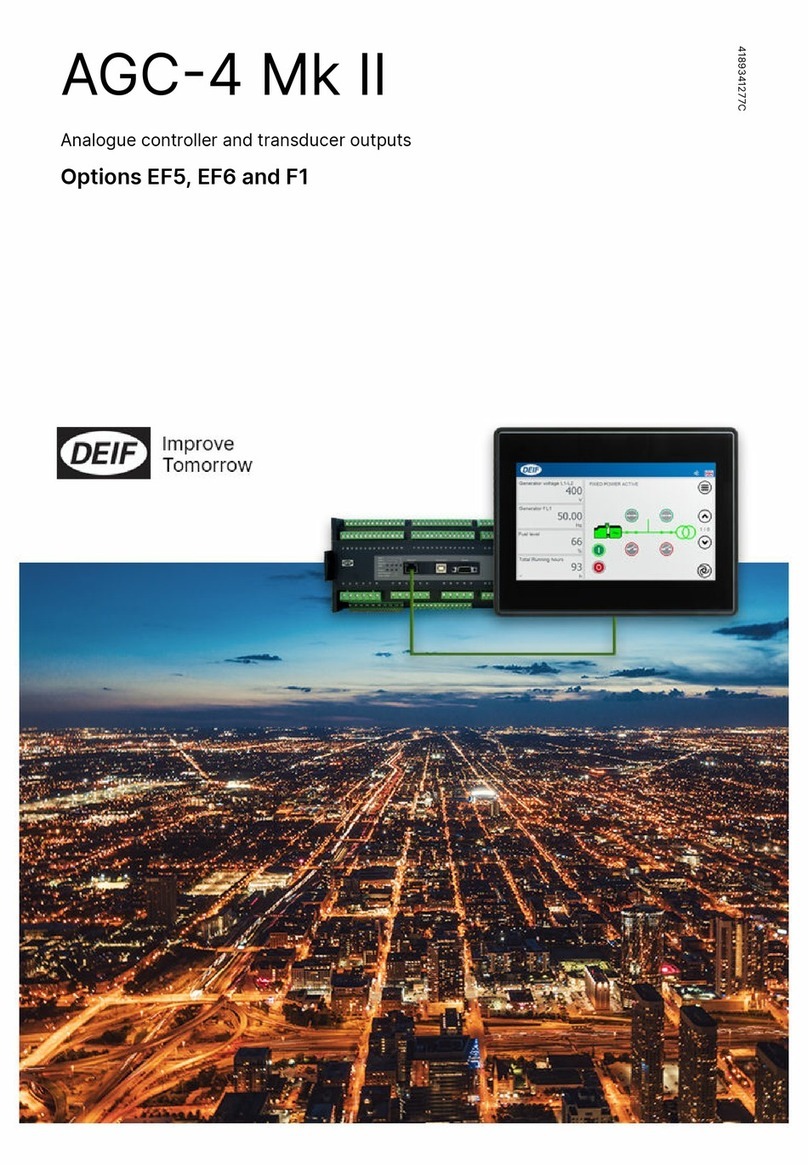
Deif
Deif AGC-4 Mk II User manual
